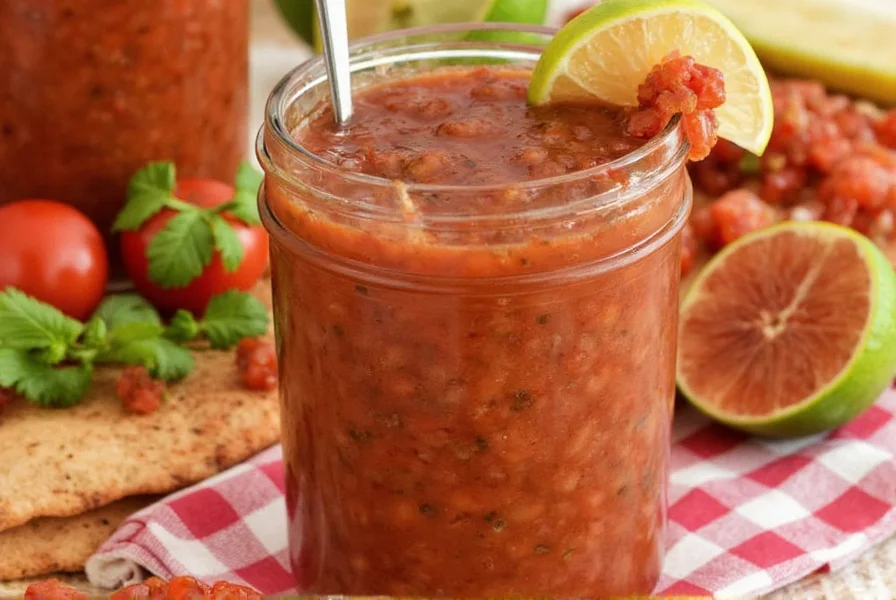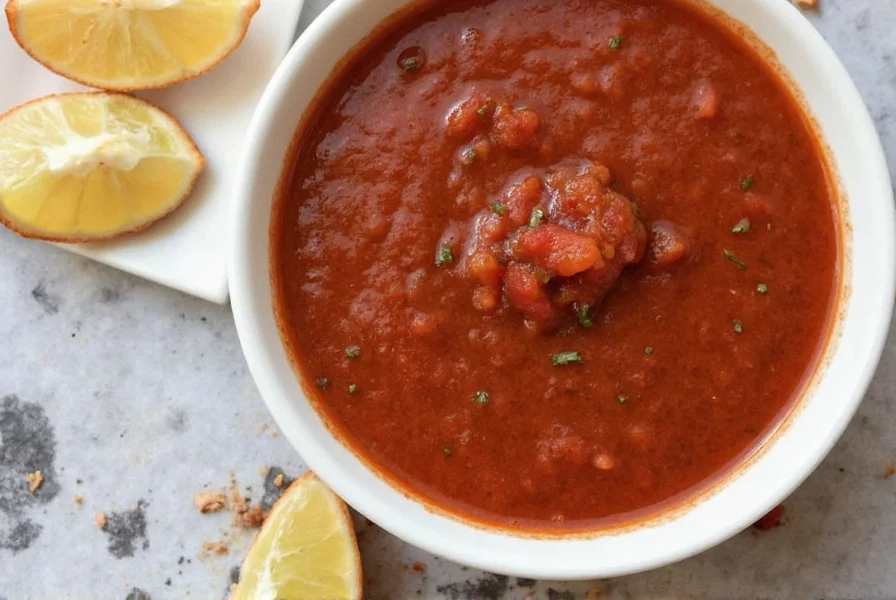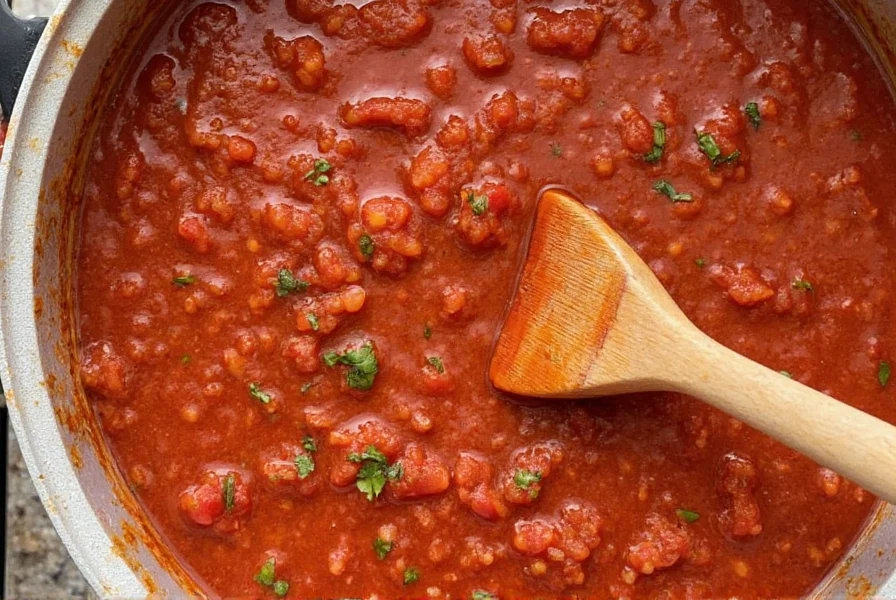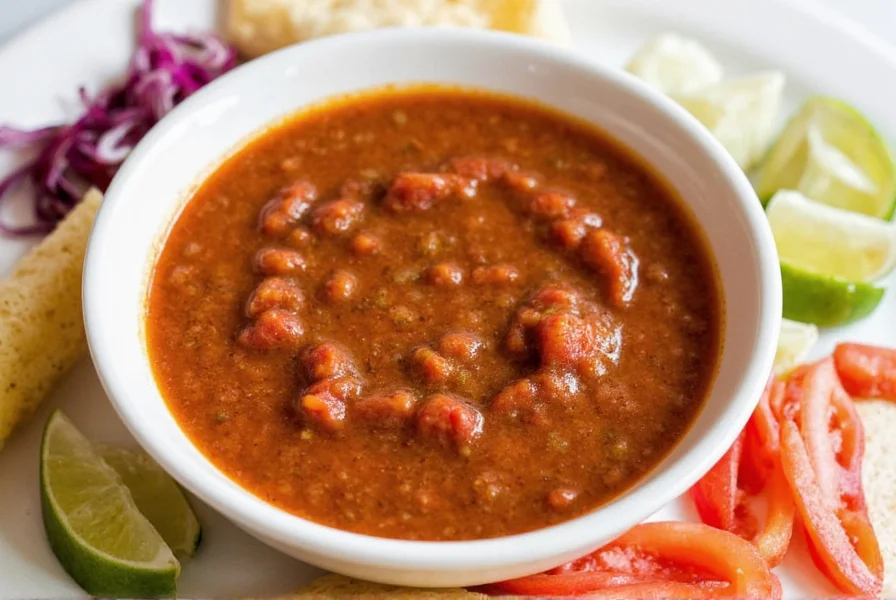Fiery & Flavorful: The Ultimate Salsa Arbol Recipe You Need to Try!
Salsa arbol, a fiery Mexican staple known for its smoky heat and vibrant flavor, has been spicing up kitchens and celebrations across the globe. Whether you're hosting a taco night or craving a condiment that brings more than just heat — this guide will help you master your own homemade salsa arbol recipe. From essential ingredients to professional tips, we’ve got you covered!
Table of Contents
- What is Salsa Arbol?
- Why Make Your Own Salsa Arbol?
- Step-by-Step Salsa Arbol Recipe
- Pro Tips for Perfect Salsa Arbol
- Buying Guide: Best Ingredients and Tools
- Creative Variations to Try
- How to Use Salsa Arbol in Everyday Cooking
- Storage & Shelf Life Tips
- Final Thoughts on Making Salsa Arbol at Home

What Exactly Is Salsa Arbol?
Salsa arbol translates literally to 'tree sauce' — but don’t worry, there are no tree leaves involved! Instead, it refers to the small, bright red chili called chile de árbol, which is native to Mexico and forms the backbone of this sauce.
This salsa delivers medium to high heat levels (depending on preparation) and a complex flavor profile — slightly nutty, subtly smoky, and beautifully earthy. Unlike some other salsas, salsa arbol typically does not contain tomatillos. Its main base is tomatoes, dried chiles, garlic, and sometimes oil or vinegar for preservation and balance.

Why Go Homemade? Benefits of Crafting Your Own Salsa Arbol
- Freshness: Homemade versions beat store-bought in both aroma and taste.
- Customization: Adjust spice level, texture, and acidity to suit your taste buds.
- Healthier: No preservatives or unwanted additives required.
- Cheaper: Dried chiles are affordable, especially when bought in bulk.
The Perfect Salsa Arbol Recipe (Authentic + Easy)
Ingredients Needed
- 6 dried chile de arbol peppers
- 2 medium ripe tomatoes
- 2 garlic cloves
- 2 tablespoons vegetable oil (or olive oil)
- 1/2 teaspoon salt (adjust to taste)
- 1 tablespoon white vinegar (optional, for brightness)
Instructions
- Toast the Chiles: Heat a dry skillet over medium heat. Toast the whole chile de arbol peppers until fragrant and slightly darkened (about 2–3 minutes per side). Be careful not to burn them!
- Rehydrate: Place the toasted chiles in a bowl and cover with boiling water. Let soak for 15–20 minutes until softened.
- Roast Tomatoes and Garlic: While chiles soak, roast tomatoes and garlic directly over flame, grill, or under broiler until charred and softened (~8–10 minutes).
- Blend: Drain chiles and add them to a blender along with the tomatoes, garlic, salt, and vinegar. Blend until smooth.
- Heat Infusion: In a small saucepan, heat the oil and carefully add the blended mixture. Simmer for 5–7 minutes for deeper flavor development.
- Cool and Store: Let cool before transferring to an airtight container or bottle. Refrigerate or freeze for later use.

Pro Tips for Making the Best Salsa Arbol at Home
- Wear gloves when handling hot chilies to avoid skin irritation.
- If you’re making spicy salsa arbol, leave the seeds in the chiles. For milder flavor, remove the seeds beforehand.
- Use a high-powered blender for smoother results. If using a regular blender, strain the mixture through a fine mesh sieve.
- Add a touch of lime juice or apple cider vinegar for tanginess without overpowering the base flavors.
- For extra depth, add a pinch of cumin or smoked paprika.

Buying Guide: Choosing the Best Ingredients & Tools
| Product | Features | Best For | Recommended Brand |
|---|---|---|---|
| Dried Chile de Arbol Peppers | Bright red color, crisp texture, intense heat | Authentic salsa base | Goya, El Yucateco |
| Cast Iron Skillet | Even heat distribution, durable | Toasting chiles and roasting veggies | Le Creuset, Lodge |
| High-Powered Blender | Smooth puree, powerful motor | Professional-level texture | Vitamix, Ninja |
| Tomatoes (Roma or Plum Preferred) | Thick flesh, less water content | Strong tomato foundation | Locally grown or organic options |
| Oil (Neutral or Olive Oil) | Smoke point, mild flavor | Simmering and infusion | Avocado oil, Sunflower oil |
Looking for a Twist? Try These Salsa Arbol Variations
- Smoky Salsa Arbol: Add chipotle or pasilla chiles to the mix for a richer, smokier kick.
- Sweet & Spicy Fusion: Toss in a bit of roasted pineapple or mango for a tropical flair.
- Herb-Infused: Stir in fresh cilantro or parsley after blending for a fresh, green pop.
- Crema-Style: Mix in sour cream or crema to create a creamy drizzle perfect for tacos al pastor or grilled meats.

What Goes Well With Salsa Arbol?
Salsa arbol is incredibly versatile. Here are some classic pairings and modern twists:
- Tacos: Especially carnitas, chorizo, or chicken tinga
- Grilled Meats: Brush onto steak, shrimp, or skewered veggies before grilling
- Eggs: Drizzle over huevos rancheros or scrambled eggs for breakfast kick
- Potatoes: A game-changer on hash browns or baked potatoes
- Cocktails: Rim spicy margaritas or Bloody Maria glasses with a dab of diluted salsa arbol
Storing Your Salsa Arbol: How Long Does It Last?
Homemade salsa arbol can be kept in the fridge for up to two weeks. To extend shelf life:
- Freezing: Pour into ice cube trays or small jars and freeze for up to 6 months.
- Oil Preservation: Pour a thin layer of oil on top before refrigerating to seal freshness.
- Vacuum Sealing: If you make large batches, consider vacuum-sealing portions for longer storage.
Final Thoughts on Mastering Your Salsa Arbol Recipe
Making your own salsa arbol recipe at home isn’t just about adding spice — it’s about bringing culture, flavor, and authenticity to your kitchen. Whether you’re a seasoned spice lover or new to the world of salsas, this sauce opens the door to endless culinary creativity.
With just a few simple ingredients and the right tools, you’ll never settle for store-bought again. So fire up that skillet, grab your blender, and get ready to elevate your meals one fiery spoonful at a time!












 浙公网安备
33010002000092号
浙公网安备
33010002000092号 浙B2-20120091-4
浙B2-20120091-4